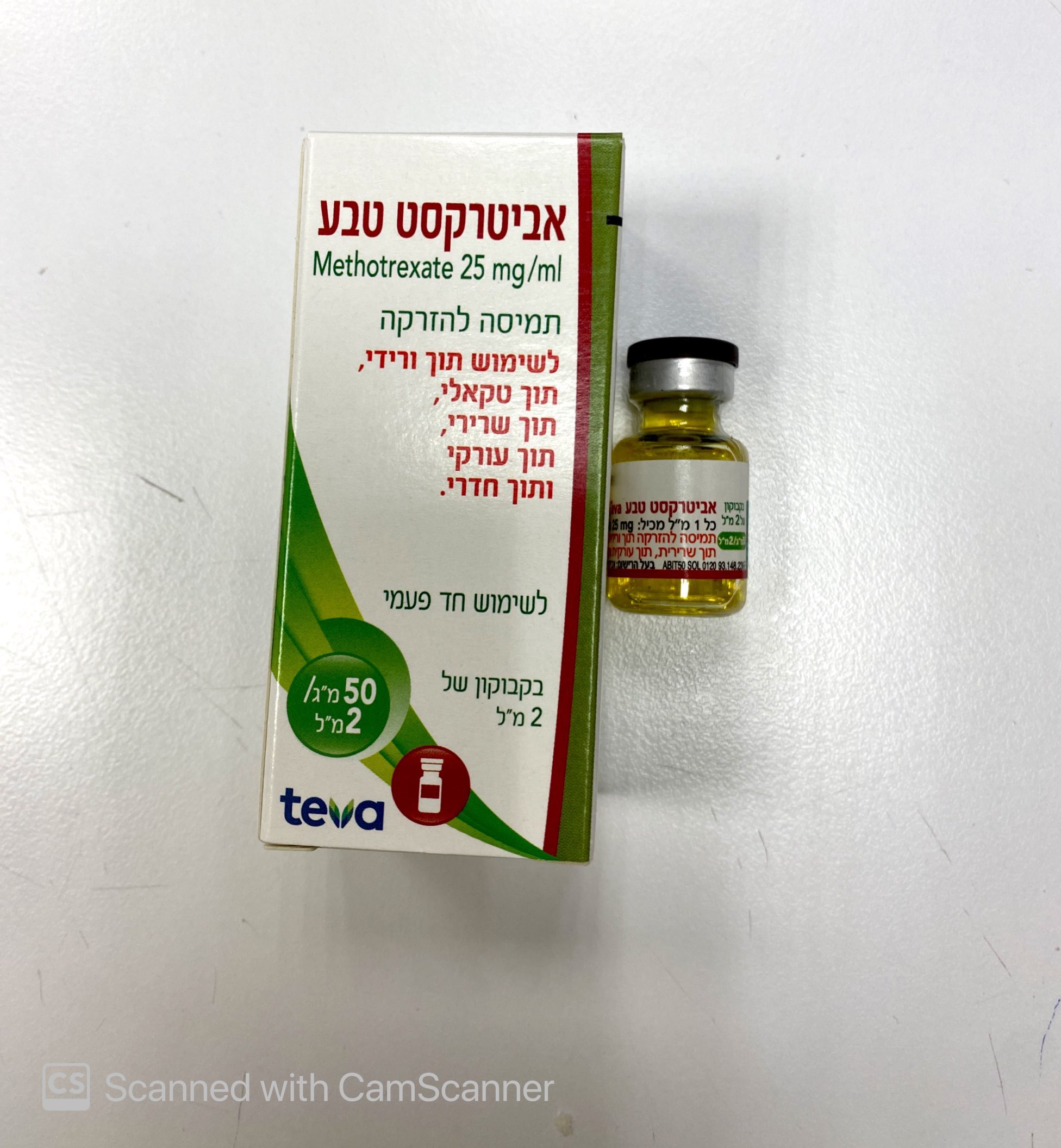Quest for the right Drug

אביטרקסט טבע ABITREXATE TEVA (METHOTREXATE)
תרופה במרשם
תרופה בסל
נרקוטיקה
ציטוטוקסיקה
צורת מתן:
תוך-שרירי, תוך-ורידי, תוך-שדרתי, תוך-עורקי, תוך חדרי : I.M, I.V, INTRATHECAL, INTRA-ARTERIAL, INTRA VENTRICULAR
צורת מינון:
תמיסה להזרקה : SOLUTION FOR INJECTION
עלון לרופא
מינוניםPosology התוויות
Indications תופעות לוואי
Adverse reactions התוויות נגד
Contraindications אינטראקציות
Interactions מינון יתר
Overdose הריון/הנקה
Pregnancy & Lactation אוכלוסיות מיוחדות
Special populations תכונות פרמקולוגיות
Pharmacological properties מידע רוקחי
Pharmaceutical particulars אזהרת שימוש
Special Warning עלון לרופא
Physicians Leaflet
Pharmacological properties : תכונות פרמקולוגיות
Pharmacodynamic Properties
Mechanism of Action Methotrexate is a folate antagonist. Methotrexate inhibits dihydrofolate reductase (DHFR), the enzyme that reduces folic acid to tetrahydrofolic acid. Tetrahydrofolate must be regenerated via the DHFR-catalyzed reaction in order to maintain the intracellular pool of tetrahydrofolate one-carbon derivatives for both thymidylate and purine nucleotide biosynthesis. The inhibition of DHFR by folate antagonists (methotrexate) results in a deficiency in the cellular pools of thymidylate and purines and thus in a decrease in nucleic acid synthesis. Therefore, methotrexate interferes with DNA synthesis, repair, and cellular replication. Methotrexate is most active against rapidly multiplying cells, because its cytotoxic effects occur primarily during the S phase of the cell cycle. Since cellular proliferation in malignant tissues is greater than in most normal tissues, methotrexate may impair malignant growth without irreversible damage to normal tissues. As a result, actively proliferating tissues such as malignant cells, bone marrow, fetal cells, buccal and intestinal mucosa, and cells of the urinary bladder are in general more sensitive to DHFR inhibition effects of methotrexate. The cytotoxicity of methotrexate results from three important actions: inhibition of DHFR, inhibition of thymidylate synthase, and alteration of the transport of reduced folates. The affinity of DHFR to methotrexate is far greater than its affinity for folic acid or dihydrofolic acid, therefore, large doses of folic acid given simultaneously will not reverse the effects of methotrexate. However, Leucovorin calcium, a derivative of tetrahydrofolic acid may block the effects of methotrexate if given shortly after the antineoplastic agent. Methotrexate in high doses, followed by leucovorin rescue, is used as a part of the treatment of patients with non-metastatic osteosarcoma. The original rationale for high-dose methotrexate therapy was based on the concept of selective rescue of normal tissues by leucovorin. More recent evidence suggests that high dose methotrexate may also overcome methotrexate resistance caused by impaired active transport, decreased affinity of dihydrofolic acid reductase for methotrexate, increased levels of dihydrofolic acid reductase resulting from gene amplification, or decreased polyglutamination of methotrexate. The actual mechanism of action is unknown. Methotrexate has immunosuppressive activity. This may be a result of inhibition of lymphocyte multiplication. The mechanisms of action in the management of rheumatoid arthritis of the drug are not known, although suggested mechanisms have included immunosuppressive and/or anti-inflammatory effects. In psoriasis, the rate of production of epithelial cells in the skin is greatly increased over normal skin. This differential in proliferation rates is the basis for the use of methotrexate to control the psoriatic process.
Pharmacokinetic Properties

שימוש לפי פנקס קופ''ח כללית 1994
Leukemias, non-hodgkin's lymphomas, breast, head and lung carcinoma, choriocarcinoma, osteogenic sarcoma. Severe psoriasis, rheumatoid arthritis unresponsive to conventional therapy, mycosis fungoides
תאריך הכללה מקורי בסל
01/01/1995
הגבלות
תרופה מוגבלת לשימוש בבתי חולים או אשפוז יום
מידע נוסף
